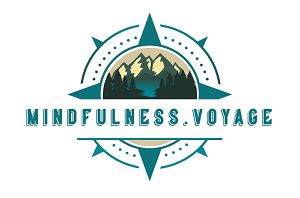Why MBSR Should Be The Workplace Standard
 Today you can find mindfulness just about everywhere, from classrooms to corporations, PBS specials and TIME magazine, and even in your grocery store checkout line. But that hasn’t always been the case, and mindfulness going mainstream has been a relatively new development.
Today you can find mindfulness just about everywhere, from classrooms to corporations, PBS specials and TIME magazine, and even in your grocery store checkout line. But that hasn’t always been the case, and mindfulness going mainstream has been a relatively new development.
Much of that is due to the work of Jon Kabat-Zinn, who created a detailed curriculum for learning, practice, and even scientific research about mindfulness. Kabat-Zinn founded the Stress Reduction Clinic at the University of Massachusetts in 1979, to help people who were falling through the cracks in the healthcare system. His Center for Mindfulness at UMass Medical School has been the main driver of academic research, teacher training, and development of a worldwide community of mindfulness practitioners, and their banner program has been Kabat-Zinn’s Mindfulness Based Stress Reduction, or MBSR.
But why does MBSR matter? Meditation and yoga, two elements of the course, have been around for centuries, so what’s the importance of this particular program?
First and foremost, MBSR is open to everyone. There are no expectations or pushes to adopt any kind of spiritual path which may be different than your own, and no insistence to attain perfect poses or deep stretches that might not be suitable for you. As someone who started meditation in the early ‘90s, the only options available where I lived were in religious institutions that didn’t fit well with my own world views. MBSR, however, has no subtle pressure to adopt a particular spiritual framework and is informed by neuroscience, psychology, and even group dynamics and contemporary learning methods. As such, MBSR has been not only more accessible and applicable to my experience in the corporate world, but in my personal life as well. It helped me to recognize when I wasn’t listening when I should have been, kept me more focused on tasks so I could complete them instead of deluding myself with inefficient “multi-tasking,” and be much better able to understand and appreciate the views and insights of co-workers, friends, and family, all in practical ways that were immediately relevant to my daily life.
Second, because it is a specific and standardized curriculum, MBSR has been a gold standard for research on the effects of mindfulness. While a total of 39 scientific papers were published before the year 2000, today that number is upwards of 6,000 papers exploring how mindfulness can help with attention, employee well-being, surgical performance, test-taking success in students, as well as pain management, depression, anxiety, burnout, and other psychological and physiological issues. MBSR is the foundation for similar programs like Mindfulness-Based Cognitive Therapy (MBCT), Mindful Self-Compassion (MSC), and over a dozen other structured mindfulness-based programs for a variety of special interests and needs.
Finally, MBSR matters because most people who dedicate themselves to the eight weeks of the program find tremendous and long-lasting value in their daily life, both at work and at home. Whether taken in-person or live online, evidence continues to show through various metrics that mindfulness can be helpful, challenging, and has a long-lasting impact on those who take it. This was particularly so in my own encounter with cancer, shifting from an otherwise hopeless (none of my family had yet survived it) and fearful time to one of resiliency, increased closeness to those I loved, and ultimately surviving the challenges of a life-threatening diagnosis.
So how does MBSR compare to other choices you have to learn about and practice mindfulness? After all, you may have many years of personal meditation practice in other places, perhaps even using online tools, apps, and websites, so what makes this different? In addition to being the first and most studied secular mindfulness program of its kind, MBSR has literally decades of rigorous teacher training and competency assessment, so you can find teachers who are credentialed to provide the high standards needed for proper delivery of the program. It’s also a specific and methodical curriculum; you are guided through a learning and practice process, with forty years of continuing scientific research behind it. Finally, MBSR is a program that is taken with others, so you not only have the opportunity to interact directly with your teacher, but to develop connections with other participants who are on their own mindfulness journey.
You may have been considering taking MBSR for a long time, or perhaps this is the first time you’ve heard of it. When I took MBSR for the first time, I’d already been a meditator for over fifteen years – but this program was and continues to be different and beneficial to me in ways I’d neither expected nor considered. It can be both challenging and supportive to commit to the program: meeting once a week for eight weeks, an all-day retreat, and home assignments every day of the program can sometimes seem like a lot for “just mindfulness.” But what I found was a welcoming environment that inspired me, taught me new and practical ways of meeting the difficulties and joys of life, and ultimately shifted the way in which I saw myself, my work, and those around me.
